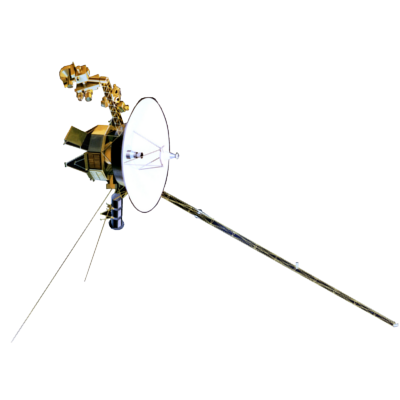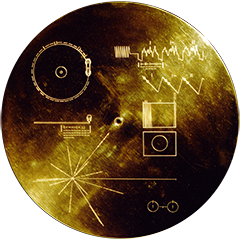Voyager LECP Data Analysis Handbook
Instrument Modeling Reports
by Sheela Shodhan
Chapter 4. Modelled LEMPA Subsystem
A model for the LEMPA subsystem is needed to determine the fate of the particle inside the subsystem.
A model was prepared from the available schematic drawings [1] of the LEMPA subsystem. Figure 4.2 shows the modelled sensor subsystem and figures 4.3 and 4.4 respectively show the projections of this system on the xy and the zy planes. This modelled sensor subsystem consists of two parts:
- The aperture cone and
- The deflection system.
The aperture cone is like a truncated cone which is cut above its apex with the cut parallel to the opening surface. This opening surface is the entrance to the LEMPA subsystem. Each of these two circular surfaces, the opening surface and the base of the cone, is modelled by hexagons. The surface of the cone is modelled by six trapezoids, each of whose parallel sides are the corresponding edges of the hexagons of the opening surface and of the base of the cone. This base of the cone rests upon the deflection system.
The deflection system is like an enclosure with the front, back, two side surfaces, lower and the upper surfaces. The upper surface is a square upon which the base of the aperture cone rests. The lower surface is also a square. The front, back and side surfaces are modelled by trapezoids.
On one of the side surfaces of this system, the housings of the Beta and Gamma detectors are mounted. Figures 4.5 and 4.6 respectively show the projection of the housings of the Beta and the Gamma detectors on the yz plane. The openings of each of these housings open into this system. The Beta and the Gamma detectors, circular in shape, lie on the base of these housings. The Beta detector's housing lies closer to the opening aperture than that of the Gamma detector. The openings and the bases are modelled by hexagons. The side surfaces of these housings are modelled by triangular planes.
The two rare earth magnets which are used to separate the ions from the electrons are mounted on the front and the back surfaces of the system.
Thus, the whole sensor subsystem is modelled by polygons. The coordinates of each of the vertices of these polygons have been determined by measurements taken from the available drawings. These and the constants of the equation of the planes that these polygons form, are included in Appendix B.
Figures:
- Figure 4.1. Schematic drawing of the LEMPA and dome detector assembly.
- Figure 4.2. Modelled sensor assembly for the LEMPA subsystem.
- Figure 4.3. Projection of the modelled sensor assembly on the xy plane.
- Figure 4.4. Projection of the modelled sensor assembly on the zy plane.
- Figure 4.5. Projection of the BETA housing on the yz plane.
- Figure 4.6. Projection of the GAMMA housing on the yz plane.
Return to thesis table of contents.
Return to Voyager
LECP Data Analysis Handbook Table of Contents.
Return to Fundamental
Technologies Home Page.
Updated 8/9/19, Cameron Crane
VOYAGER 1 ELAPSED TIME
*Since official launch
September 5, 1977, 12:56:00:00 UTC
VOYAGER 2 ELAPSED TIME
*Since official launch
August 20, 1977, 14:29:00:00 UTC
QUICK FACTS
Mission Duration: 40+ years have elapsed for both Voyager 1 and Voyager 2 (both are ongoing).
Destination: Their original destinations were Saturn and Jupiter. Their current destination is interstellar space.



